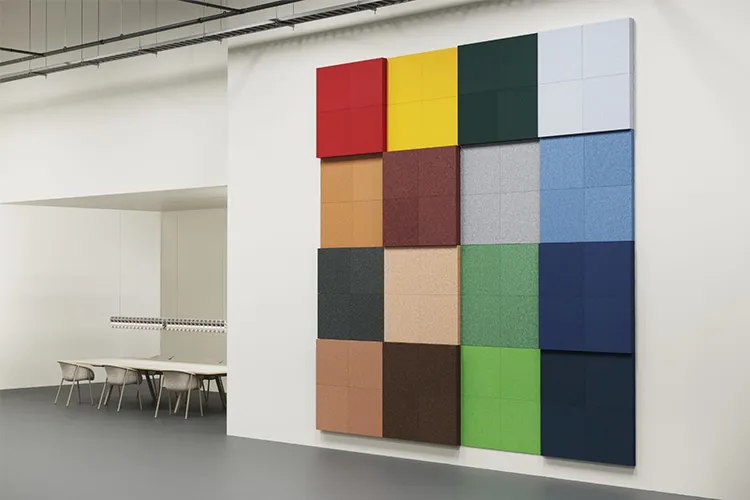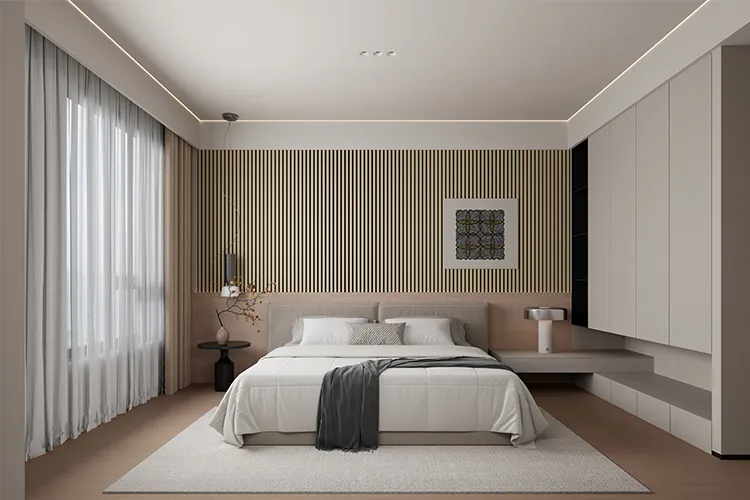Evita che la tua richiesta sia una risposta tardiva, inserisci il tuo WhatsApp/Skype insieme al messaggio, in modo da poterti contattare al primo colpo.
Vi risponderemo entro 24 ore. Se per il caso urgente, si prega di aggiungere WhatsApp/WeChat:
Avvertenze: Variabile non definita $public in /www/wwwroot/bnpanel.com/wp-content/themes/hyhadmin/header.php in linea 243
Avvertenze: Tentativo di accesso all'offset dell'array su null in /www/wwwroot/bnpanel.com/wp-content/themes/hyhadmin/header.php in linea 243
,. Oppure chiamare
Avvertenze: Variabile non definita $public in /www/wwwroot/bnpanel.com/wp-content/themes/hyhadmin/header.php in linea 243
Avvertenze: Tentativo di accesso all'offset dell'array su null in /www/wwwroot/bnpanel.com/wp-content/themes/hyhadmin/header.php in linea 243
direttamente.
Rooms echo. Calls are muddy. Noisy neighbours leak unwanted noise into your space.
The result is fatigue, lost focus, and complaints.
Acoustic panel systems absorb sound e reduce echo—an effective way to clean up the room’s sound fast.
Acoustic panels really work—for sound absorption. They absorb sound waves and reduce reflections (echo/reverberation) within a room, improving clarity and comfort. To soundproof a room (blocking noise between rooms), you need added mass, airtightness, and decoupling. Panels help the inside; walls/doors stop the outside.

acoustic panel soundproof wall panel
People often mix these up. Soundproof work aims to prevent the transfer of sound—to block sound from entering or leaving. That’s sound insulation (think heavy walls, sealed doors). Sound absorption uses an acoustic panel to dampen sound inside a space and reduce reverberation.
Here’s a quick comparison that clarifies the difference between soundproofing and sound absorption:
| Goal | What it does | Typical metric | Common materials |
|---|---|---|---|
| Soundproof (isolation) | Stops sound transmission between rooms | STC | Mass drywall, concrete, sealed doors |
| Sound absorption (treatment) | Absorb some of the sound inside a room; reduce echo | NRC | Acoustic panel, mineral wool, PET felt |
If you need better speech clarity in offices and classrooms, broad-coverage polyester systems are reliable options such as polyester fiber acoustic panels. These are designed to absorb sound across speech frequencies and improve day-to-day comfort.
An acoustic panel is designed to absorb sound waves by turning sound energy into tiny amounts of heat inside porous fibers. That’s why acoustic panels work so well in meeting rooms: they absorb sound energy and cut reflections that blur speech.
For durability and easy maintenance in busy spaces, PET felt panels are a strong choice—see how pet felt acoustic panels handle mid-to-high bands to reduce the amount of noise that bounces around and to improve the acoustic feel.
Short version: panels improve the acoustic comfort within your room; they don’t build mass. To soundproof a room, use construction methods that prevent the transfer of sound (seal gaps, add mass, and decouple). Use panels to make speech crisp; use isolation to keep sound from entering.
In practice, combine both: seal doors, add mass, then hang panels to reduce echo and raise sound quality. For wood-finish décor that complements isolation layers, wooden acoustic panels can pair nicely with treated walls while helping to absorb sound inside.
Types of acoustic panels include:
Slat wall panels blend design and performance. Panels come in various finishes, allowing you to match brand look and acoustic performance. Explore options in acoustic wood slat wall panels that balance texture with mid-band absorption: acoustic wood slat wall panels.

acoustic wood slat wall panels.
Start at first reflections (side walls), then back wall, then ceiling. Place acoustic panels on wall or ceiling surfaces nearest talkers and mics. Put a few acoustic panels behind the presenter to control flutter and reduce noise that returns to the mic. This keeps sound within a room calm and intelligible.
Looking for small-room examples and coverage ideas? See practical layouts similar to those used in acoustic panels for home studio projects: acoustic panels for home studio.
Coverage depends on size, surfaces, and use. A small office (3×4 m) may start with six to eight acoustic panel modules (600×1200 mm) to reduce echo e improve the sound quality within the space. Rooms with glass or concrete often need more.
Example “before vs after” NRC coverage (illustrative):
NRC coverage (% of reflective surfaces)
Before: 5% |██
After: 25% |██████████
Add panels until speech is clear and fatigue drops. This acoustic treatment approach will improve the sound quality and comfort for everyone.
Yes. Slatted acoustic wall systems use a felt backer and slat panels to break up reflections while absorbing mids. They absorb and dampen sound, smooth flutter, and trim comb-filtering around talkers. In open offices, they’re good for soundproofing feel—lower distraction—even if they don’t add isolation mass.
When aesthetics matter, acoustic slat systems give you controlled reflections and a natural look. They’re practical in lobbies, corridors, and lounges where you need calm, not a studio.
Acoustic foam can absorb sound at mid/high frequencies but is less durable in public spaces. PET felt boards are dense, color-stable, and installer-friendly. Neither by itself will soundproof a wall; they’re treatment layers, not mass layers.
If you prefer a smooth, cleanable surface with dependable absorption, consider polyester boards often used in schools and offices: polyester acoustic board. Choose these when you want to dampen sound within a room while keeping maintenance simple.
Plan first reflections, then symmetry. Use standoffs or direct mounts. Panels are designed to absorb broad-band reflections; many arrive factory-prepped, which speeds installing acoustic panels on site. Combine wall coverage with a small ceiling cloud for better uniformity.
For brand-sensitive spaces, specify colorways and CNC-engraved patterns. Odd sizes or curves are fine—just keep layout consistent so listeners get even results across the room.
A small studio had noisy neighbours and hard surfaces. After sealing the door sweep (isolation step) and adding eight PET acoustic panel modules, speech clarity jumped. The team reported 30–40% fewer “can you repeat that?” moments and lower meeting fatigue. Acoustic panels help with internal clarity; isolation stopped sound from entering.
In apartments, struggling with noisy neighbours is common. Panels won’t fix thin walls, but they can help by making voices less boomy inside, so you talk softer and hear better. In open-plan offices, panels allow teams to focus by trimming reflections so sound within stays controlled.

Office Meeting Rooms & Workspaces
Some rooms need more than panels. If bass booms or outside traffic dominates, acoustic panels might be part of a bigger plan that adds mass layers, seals, doors, glazing, or floating floors to cut sound transmission e sound from entering or leaving.
For mixed materials, combine PET felt with perforated timber (timber acoustic) or grooved surfaces to tune the spectrum. This paired approach improves acoustic quality without a full rebuild and keeps finishes coordinated.
We’re a professional manufacturer in China producing high-quality acoustic panel systems in PET and acoustic wood for global B2B clients. We support OEM/ODM branding, color matching, and cut-to-fit sizes. Panels are often used in offices, schools, hotels, transit hubs, and healthcare where durability and acoustic performance both matter.
From natural veneers to hygienic PET, panels like slatted veneers and CNC grooves carry your design while they absorb sound. We help coordinate specs, samples, and logistics for project timelines and consistent finishes worldwide.
Simple selection guide
| Use case | Good choice |
|---|---|
| Office meeting room | PET acoustic panel with NRC ≥ 0.7 |
| Lobby with brand look | Slatted wall panel with felt backer |
| Classroom | PET panels; wipe-clean finish |
| Podcast room | PET + corner bass control |
For tuned absorption with natural finishes, slatted systems work well alongside PET sets. When you use acoustic panels, you absorb sound energy and calm reflections so teams think and talk with less strain.
Do acoustic panels keep sound from entering my room?
Not by themselves. They treat reflections inside. To block sound from entering, add mass, seal gaps, and decouple layers; then add panels to tidy the inside.
Where should I start if the room is very noisy?
Cover first reflections and the back wall. Add a ceiling cloud. PET acoustic panel kits make quick noise reduction wins.
Can panels help with music practice?
Yes. They absorb sound waves that bounce off hard walls. You’ll hear detail better and improve the acoustic feel of the room.
How do I soundproof a room for a home theater?
Use isolation methods first (mass + seals). Then add PET or wood pannelli acustici a parete to control echoes. See layout ideas similar to acoustic panels for home theater.
Are slat wall panels only decorative?
No. With a felt backer they’re designed to absorb sound waves while adding texture. They’re great where aesthetics matter.
Are panels safe and durable for public spaces?
Yes. PET felt and engineered wood panels are robust, cleanable, and color-stable—ideal for schools, offices, and transit areas.